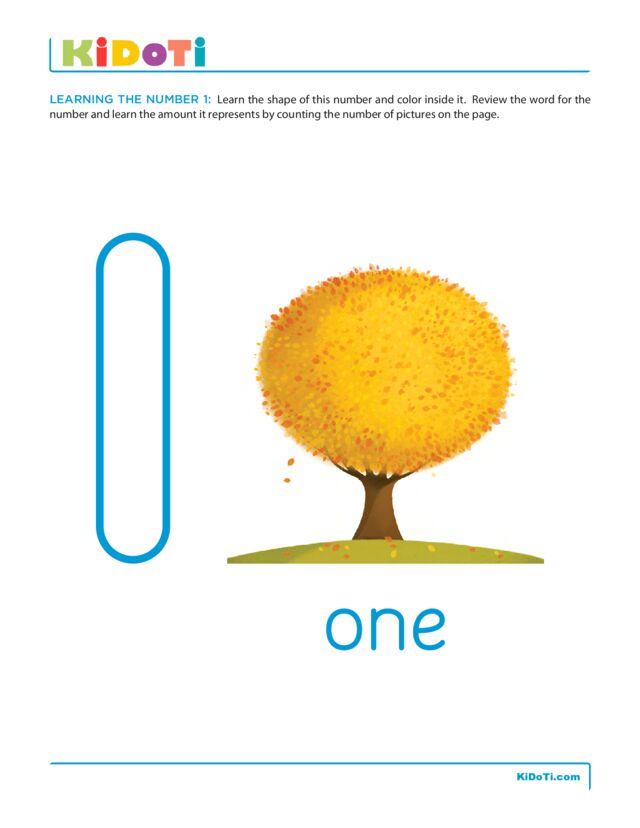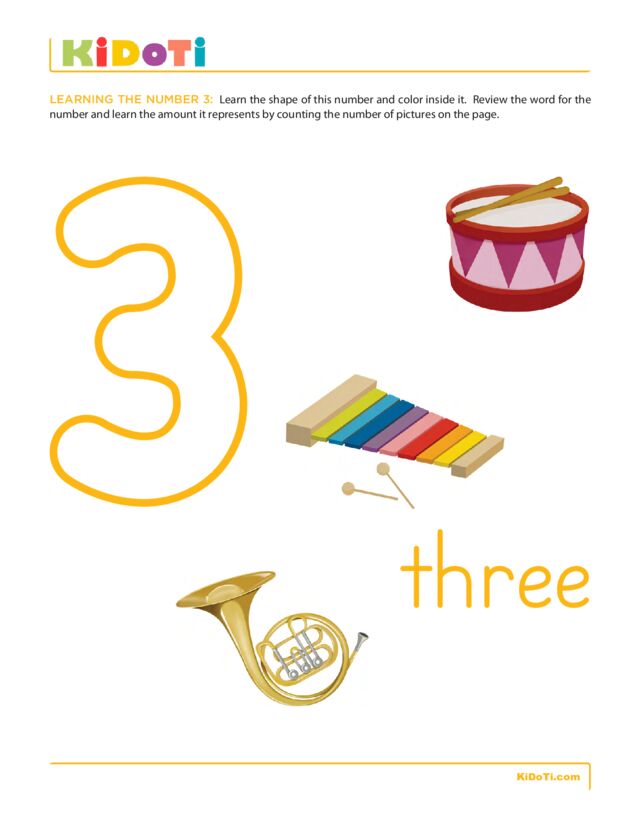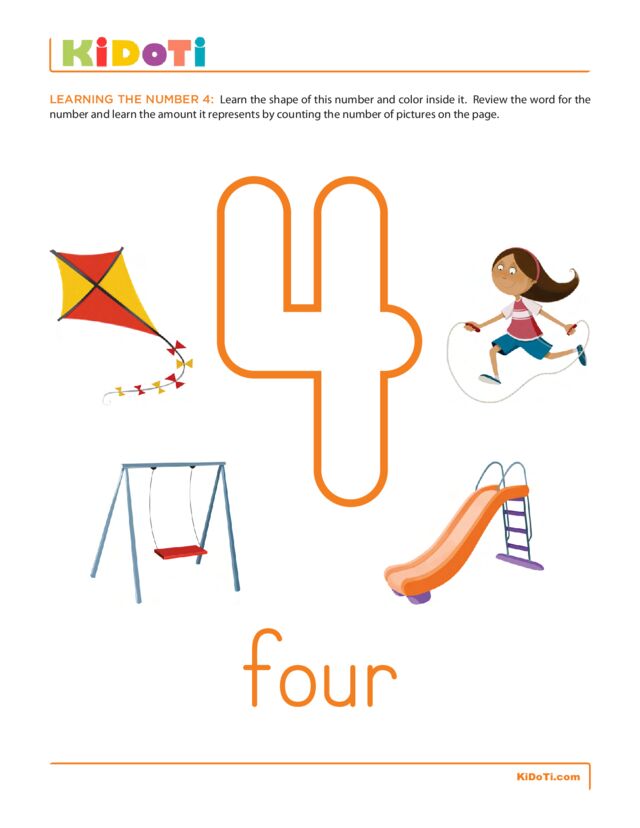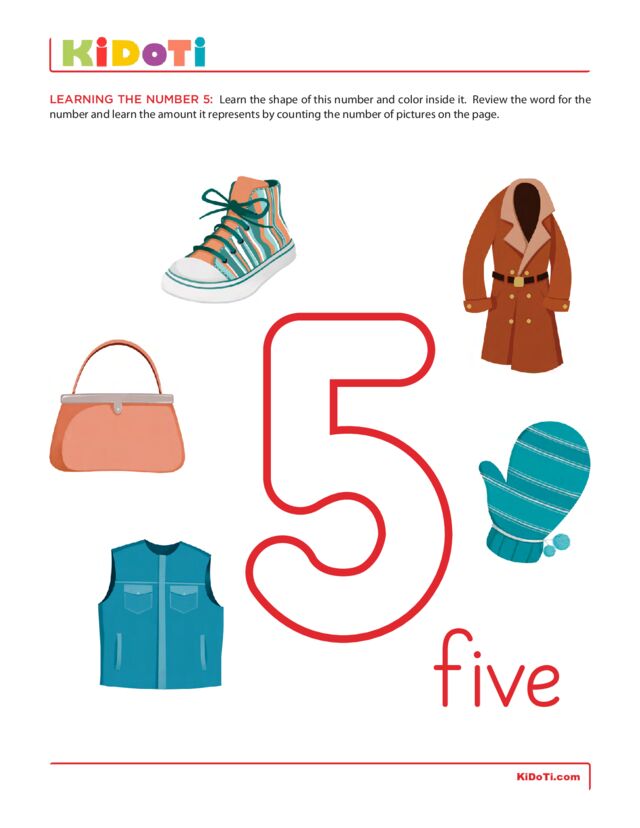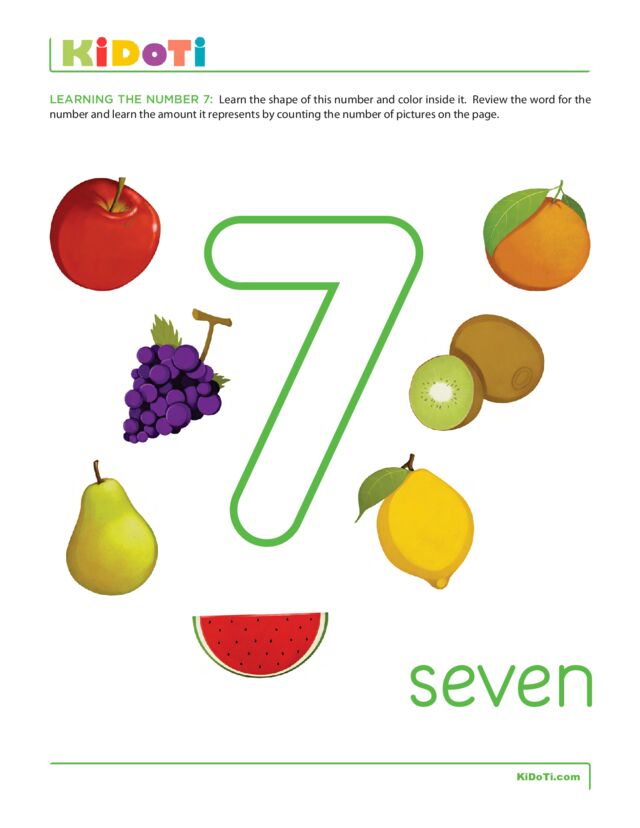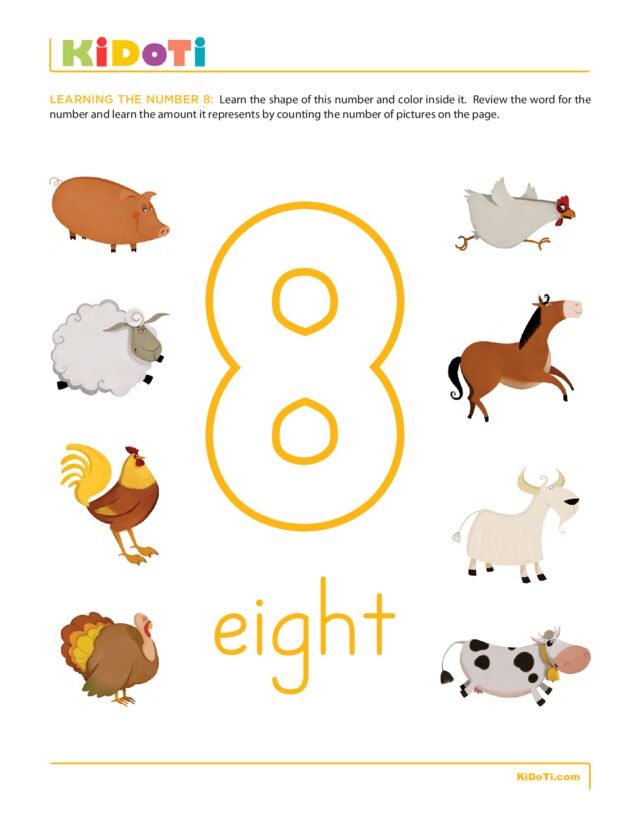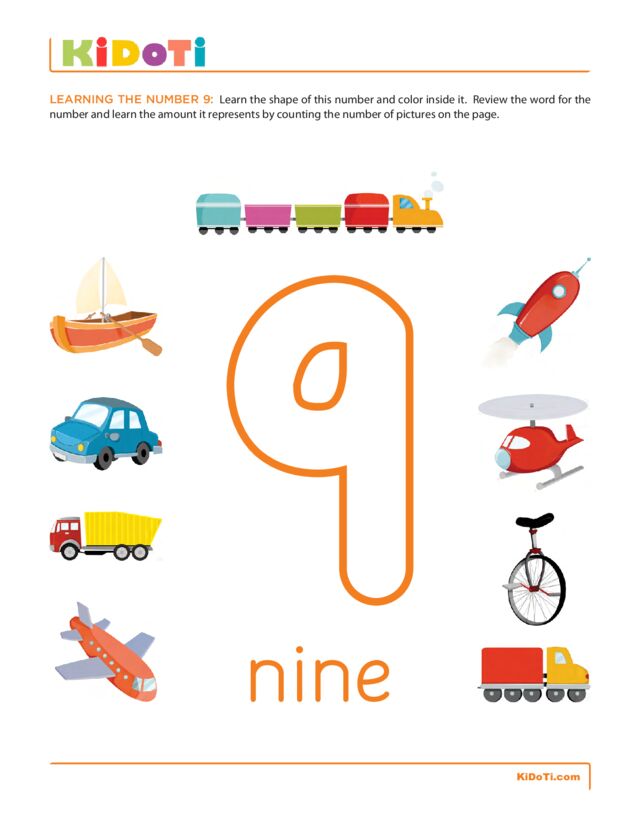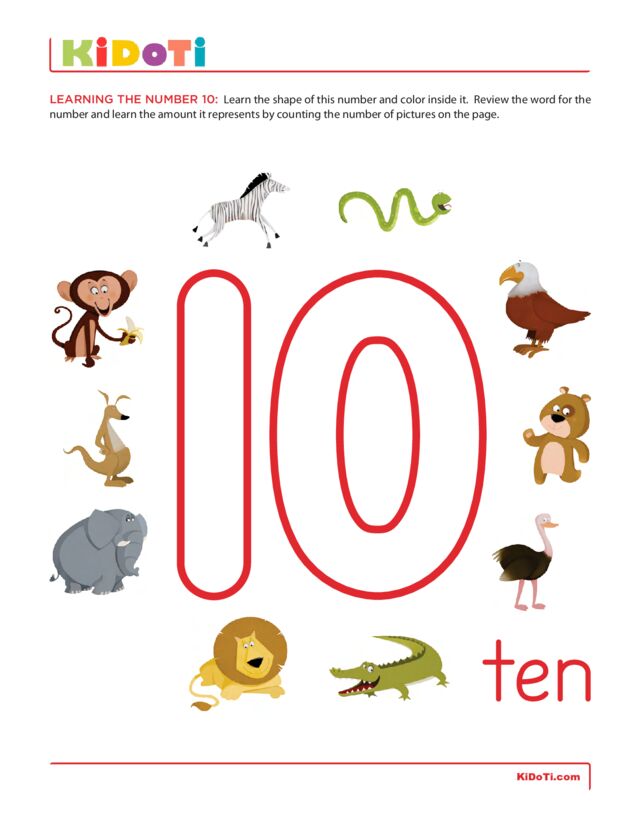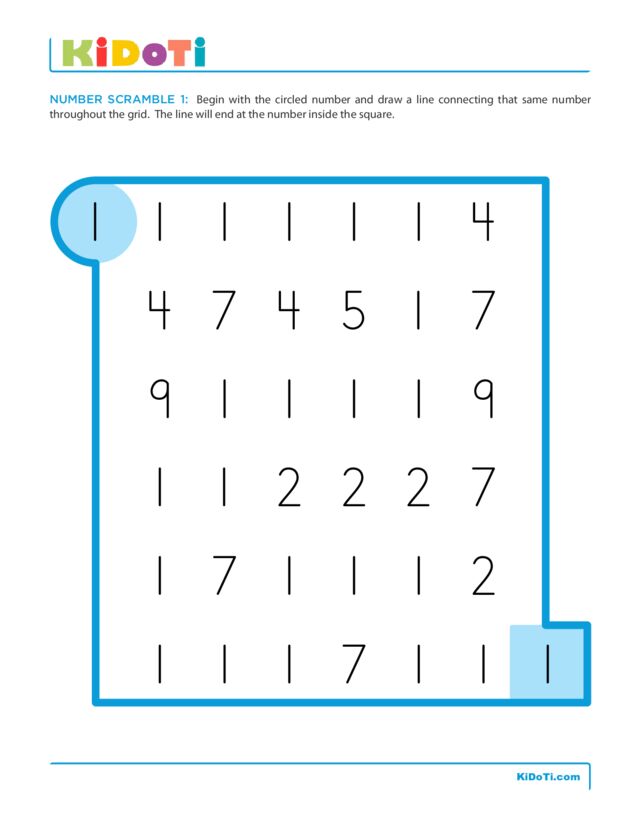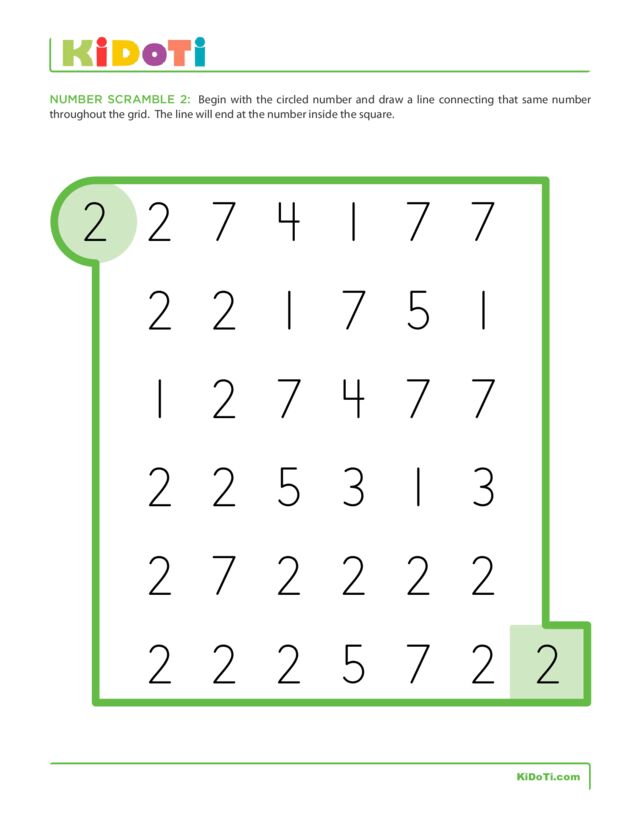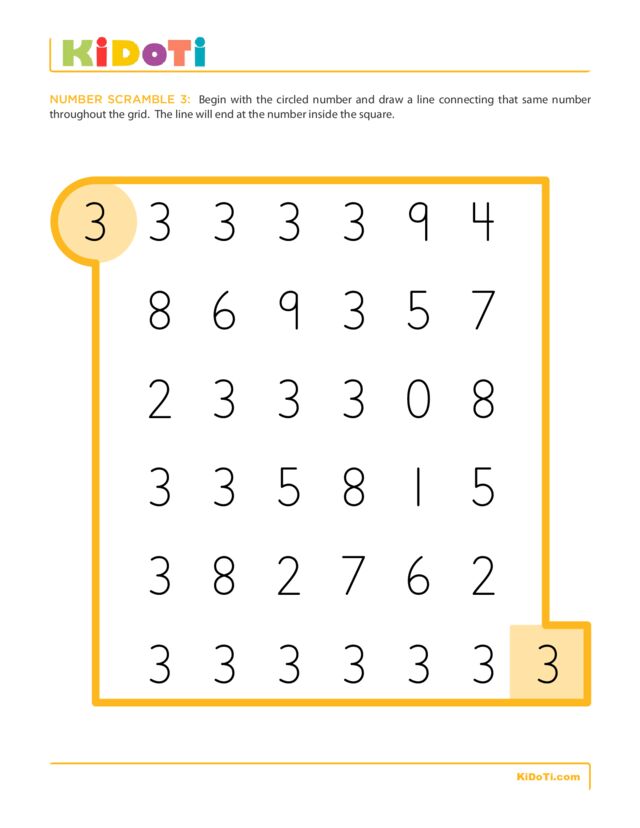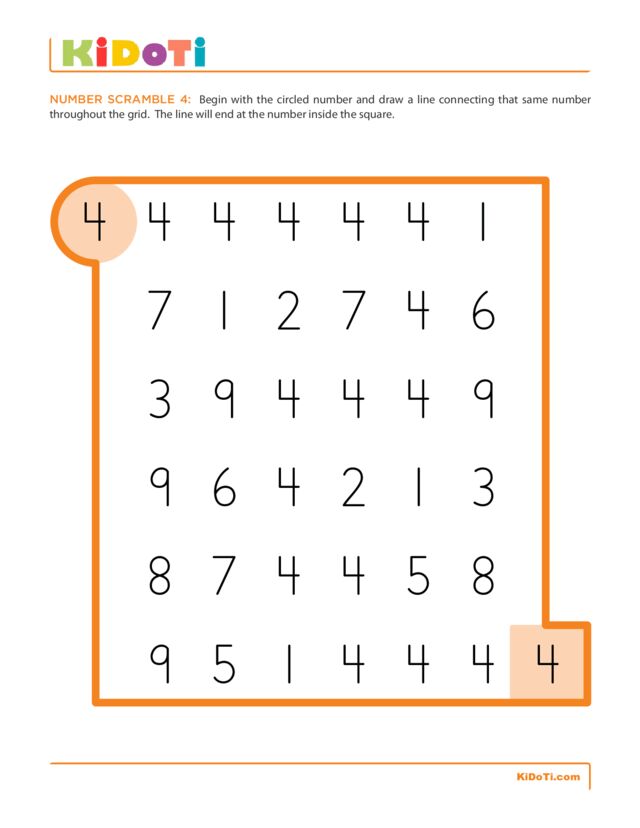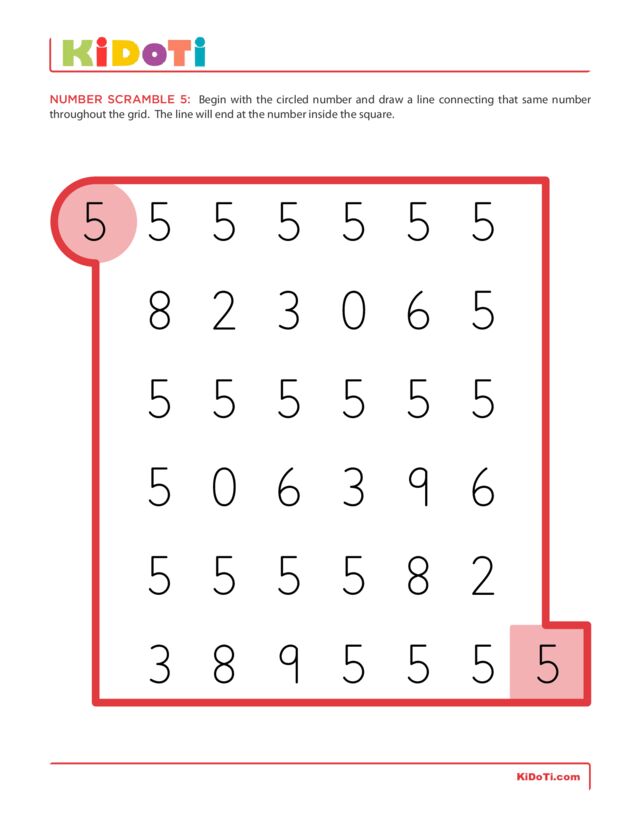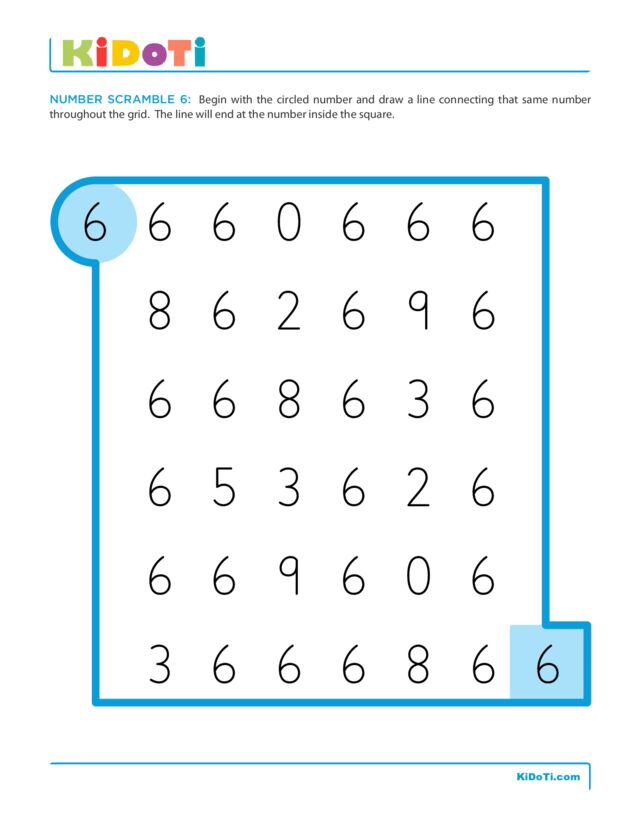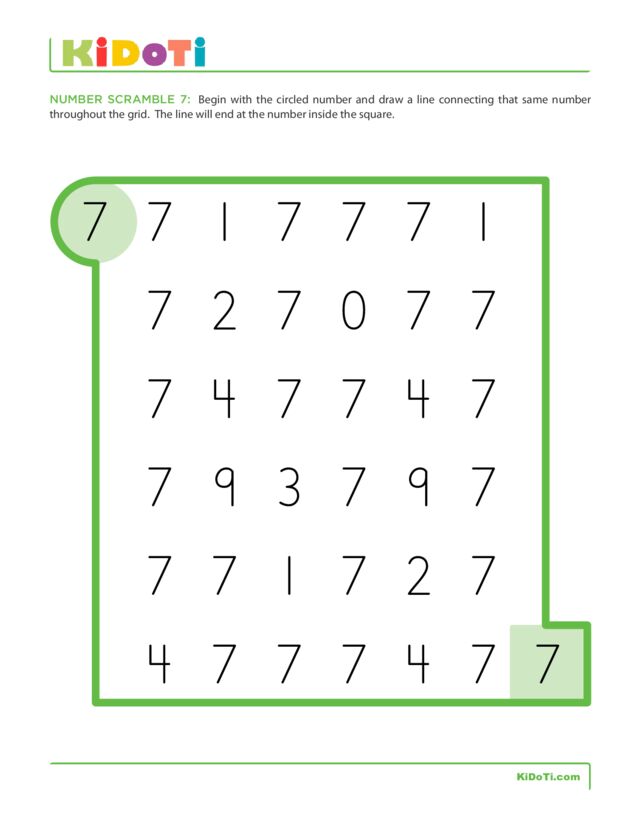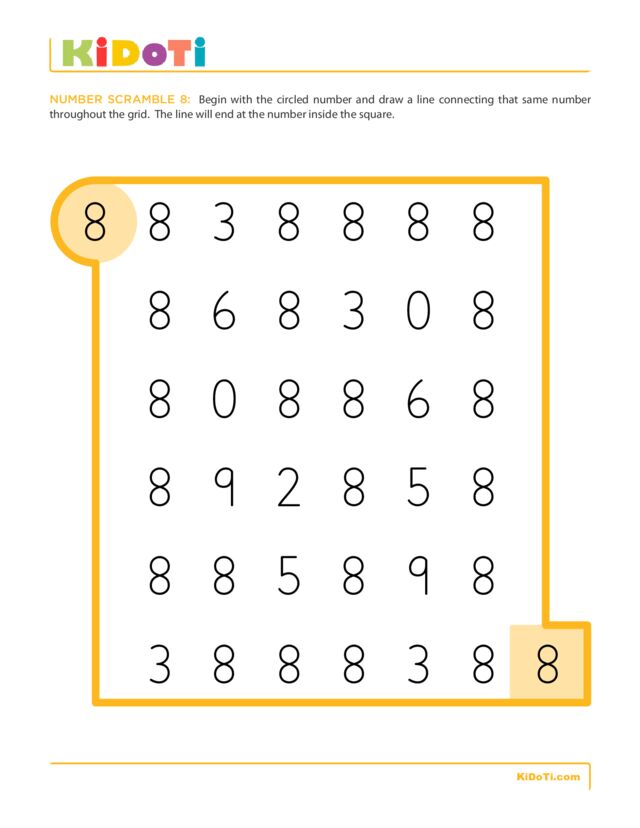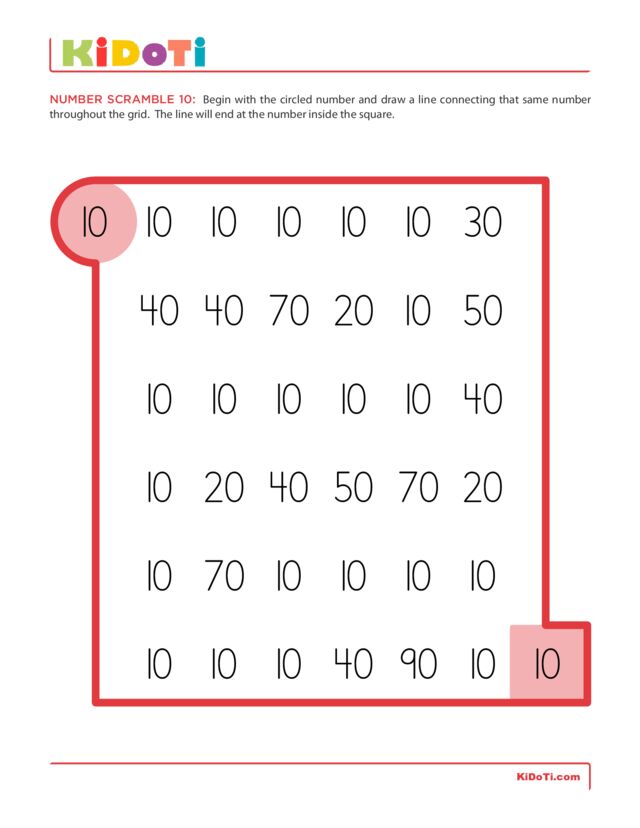Learning to recognize the numbers is an important precursor to being able to successfully complete more advanced activities. By introducing your child to the shape of each number and the corresponding number of items it represents, your child will get important practice identifying each number and matching it to the correct number of items. Your child will also get important practice seeing each number word.
Coloring Numbers
Number Scrambles
Importance of helping children learn the numbers
Knowledge of numbers is the foundation for math skills that children will use all of their lives. Understanding their world and communicating with others often involves number concepts such as amounts, volume, weights, distances, and time. Demonstrate for your child how numbers play a role in his life. Let him know, for example, that he will have “5 minutes left to play on the swings” instead of simply telling him that playtime will be over soon. When asking your child to share a toy at home, put on the timer so that he can see how each child has the same amount of minutes to play with the toy. Your child will no doubt understand quickly how important numbers are in everyday activities.
Knowing about numbers begins by learning the name for the number, the formation of the number, and amount that this number represents. As with learning all new skills, practice and more practice is needed. These colorful worksheets will provide fun opportunities for children to work with and understand numbers.
Tips for using these number worksheets
Naturally, the first worksheet is the ideal way to begin. The number is large and your child can use the pointer finger of his dominant hand to trace inside the shape and pretend that he is writing the number. Coloring in the shape will also reinforce the number’s formation. Ask your child to count the amount of pictures on the page, touching each picture as he counts aloud to practice one-to-one correspondence. The ask him if he can find the word that says the name of the number and “read” it to you. He will likely find the printed word and, after counting the objects, be able to say the word aloud as he points to it.
The number scramble is a fun way to solidify learning the shape or formation of the number. Many numbers are very similar (such as 1 and 7, 6 and 9, or 3 and 8), so added practice with number identification is always helpful. Allow your child to touch the numbers along the path with the pointer finger of his dominant hand before he attempts to complete the worksheet with his pencil. Remind him that he needs to connect the numbers by moving up, down, or across the rows, but never diagonally. When he has discovered the path that ends on the colored square, he may complete the worksheet with his pencil.
The third worksheet reinforces the number formation and asks your child to identify the amount associated with the number. Direct your child to touch each picture in the group as he counts and circle the group with the correct amount. If your child is able to spot the appropriate groups on sight, that is fine. But ask him to touch and count each picture to be sure. For additional practice, ask him to count the groups he does not think are correct, as well. Some children enjoy marking the incorrect groups with an X.
The fourth worksheet featuring plates with food pictures is a fun way to practice counting. Ask your child to point to the plate showing the number being learned. Ask him to count out the foods that he selects and place them on or above the plate so that the number is still visible. If he is correct, allow him to paste the pictures on the paper. I recommend making two copies of this page to provide practice counting both amounts shown on the worksheet at a later time.
Extra activities to supplement the number worksheets
Since numbers are all around us, you can supplement your child’s understanding of numbers just about anywhere
- Count aloud as you wait in line at the grocery store.
- Count aloud as you walk to your car or into school.
- As you walk through a store or in your neighborhood, challenge your child to spot specific numbers on signs, price tags, street signs, or license plates.
- Go on a number hunt. Beginning with the number 1, challenge your child to spot all 10 numbers from 1 to 10 either in your house or in the environment.
